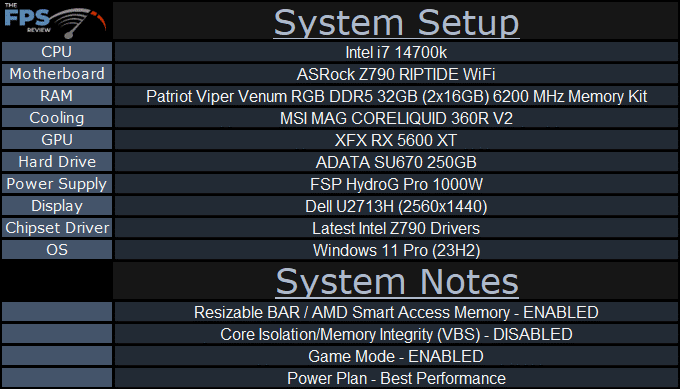
Introduction
Today we have the new ASRock Phantom Gaming Z790 RIPTIDE WIFI in the house to put through our testing and see how it holds up. Currently, this motherboard is $249 on NewEgg, putting it at a very attractive price point. We will be loading this motherboard up with the i7 14700k that we recently reviewed, if you have the time you should also check out the i9 14900K and i5 14600k reviews we have as well.
The ASRock Phantom Gaming Z790 RIPTIDE WIFI is based on Intel’s Z790 chipset that was introduced alongside the 13th-generation desktop processors. With this chipset you can expect support for 20 lanes of PCIe 4.0, 8 of PCIe 3.0, and a plethora of USB 3.2 (Both Type A and C) ports. Notably however with the Z790 chipset is that PCIe 5.0 is handled exclusively by the processor and not the chipset. The ASRock Phantom Gaming Z790 RIPTIDE WIFI provides both a PCIe 5.0 x16 expansion slot, as well as a PCIe 5.0 x4 M.2 slot, however, be warned that utilizing the M.2 slot will downgrade your x16 expansion slot to x8 maximum.
Packaging and Contents
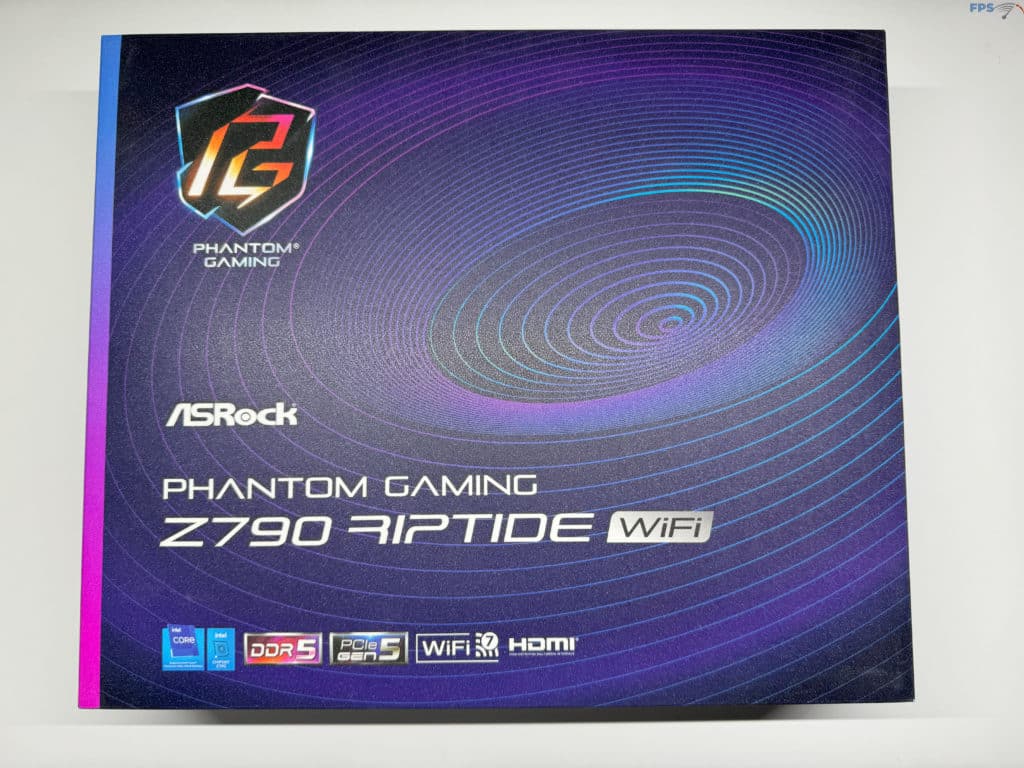
The ASRock Phantom Gaming Z790 RIPTIDE WIFI comes in at the lower end of the “mid-range” Z790 motherboards, and the contents you receive with this motherboard reflect that. In the box, you will find two (2) SATA cables, a WiFi antenna with a solid base, one (1) thermistor cable, and one (1) ARGB splitter cable. On top of these accessories, there is the typical user manual, case badge, and a branded keyboard key for those interested in showing off their Phantom Gaming product.
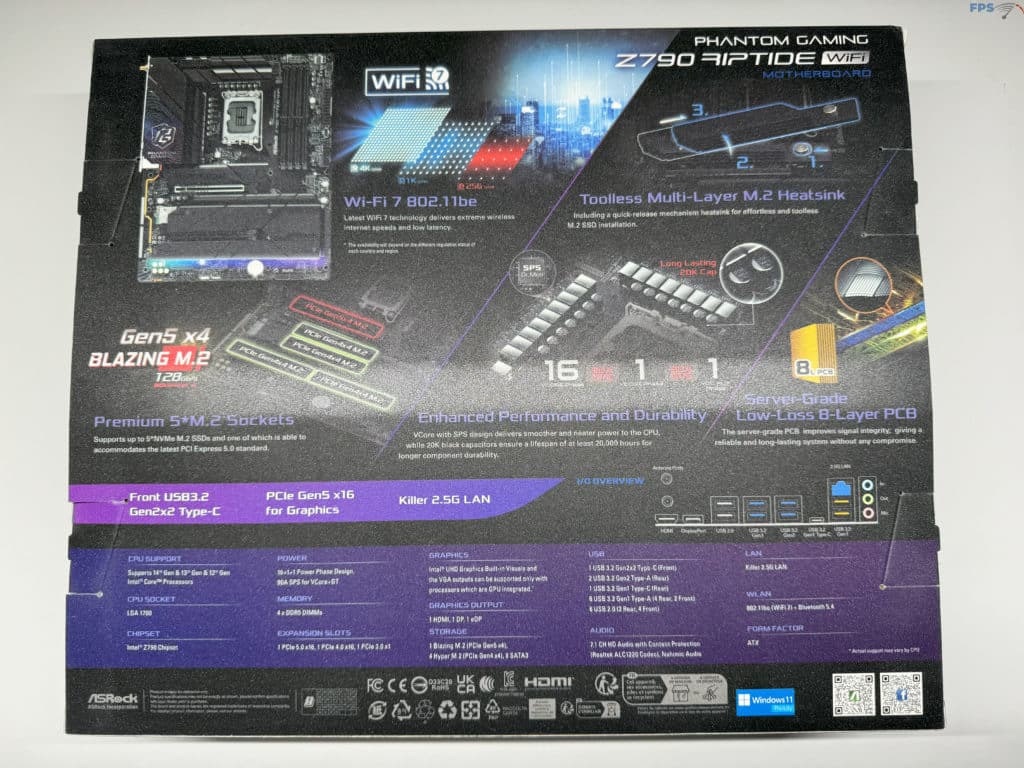


ASRock Z790 RIPTIDE WiFi PCB & Features
The layout and construction of this motherboard are what is to be expected for a motherboard in this price range, but not much more. This motherboard is covered in heat spreaders, from the 16+1+1 MOSFETs and their active cooling to the chipset to all M.2 slots, there is no shortage of heat spreaders. We especially like seeing the ability to not require an after-market heatsink for any M.2 slots, which is not the norm to see, however be aware that the main M.2 slot (M2_1) has a tool-less latch that requires you to “pinch” the release mechanism which can be a bit awkward. Beyond this, only the top PCIe expansion slots are re-enforced, and with today’s graphics cards, this is a very welcome addition.

For this motherboard we have ASRock going with a 16+1+1 VRM power delivery with the DrMOS SPS, Smart Power Stage, technology implemented. This along with the 8-layer PCB, cooling, and overall construction of the motherboard should provide you with a very solid and stable motherboard for pushing the limits of your new Intel processor. One thing to note is the VRM heatsinks to the left of the monitor is rather thin and is not solid like we have seen on some other motherboards in this class.

For the rear I/O we have connections for the 2.5 GbE Killer E3100G LAN, two (2) antenna ports, one (1) USB 3.2 Gen1 Type-C Port, two (4) USB 3.2 Gen2 Type-A ports, two (2) USB 3.2 Gen1 Type-A ports, two (2) USB 2.0 ports, two (2) Lightning Gaming USB Ports, an HDMI and Display port, along with an a Mic In, Line In, and Front Speaker Out for audio connections.
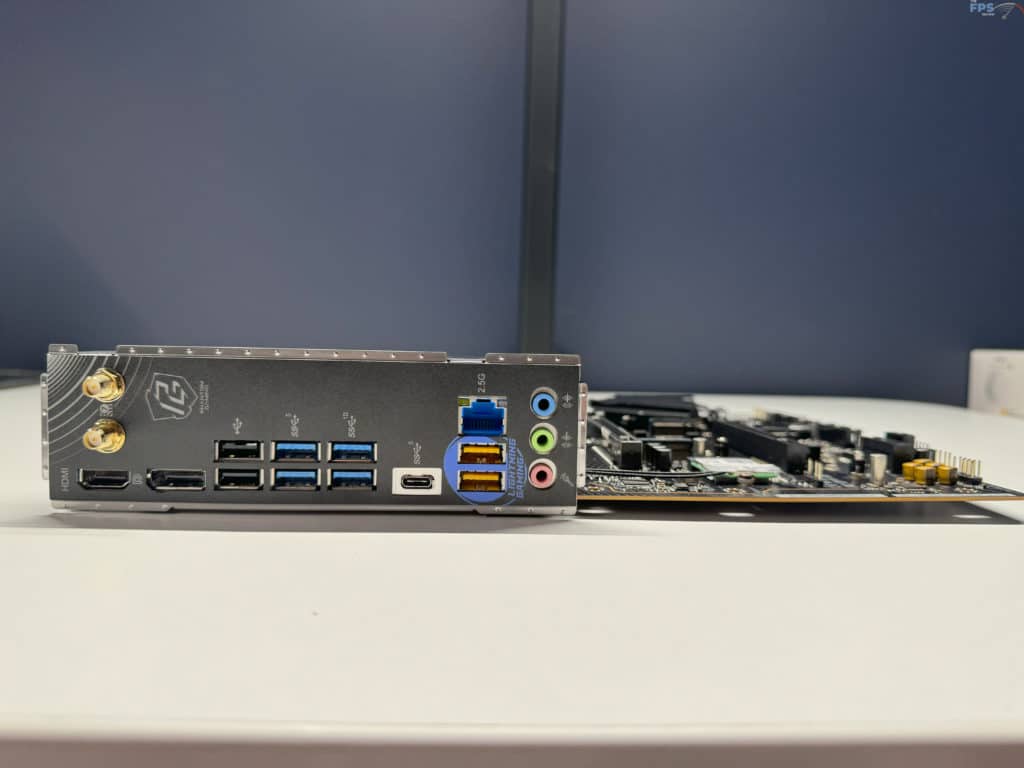
For storage on this motherboard, we have eight (8) SATA 6GB/s connectors from the chipset, one (1) M.2 Gen5 slot from the CPU, three (3) M.2 Gen4 slot from the chipset, and one additional (1) M.2 Gen4 slot from the CPU. All of the M.2 slots can support type 2260 and 2280-sized devices, except the lone Gen5 slot.
ASRock implements a toolless installation option for all M.2 drives that requires just a twist of the pre-installed standoffs to allow for easy retention, however, the M2_1 (the topmost) slot is the only true toolless installation location as the heatsink is not screwed down. One more thing to note, as mentioned above, is that using the PCIe 5.0 slot (M2_1) will limit your primary PCIe 5.0 expansion slot to x8 instead of x16. There is one additional M.2 slot, and while it is exposed, it is intended to be utilized for the WiFi / Bluetooth adapter.

Expansion slots on this motherboard are from three (3) PCIe slots, the top slot is a PCIe 5.0 from the CPU, while the middle and the lower slot are PCIe 4.0 and PCIe 3.0 respectively, and are provided by the chipset.
As with most motherboards on the market today, there are additional options for connectivity in your case with the internal USB headers. All of the onboard headers are provided by the Z790 Chipset, where you have options for an additional one (1) USB 3.2 Gen2x2 Type-C, four (4) USB 3.2 Gen 1 Type-A, and four (4) more UBS 2.0 Type-A ports.
From a fan header perspective, there are a total of seven (7) 4-pin type connectors, with one (1) being dedicated to the CPU fan, one (1) for an additional CPU fan or water pump, four (4) being fan or water pump connectors, and the last one (1) being for only fans. For testing, we set all fans and pumps to 100% to maximize the cooling available to our CPU.
For those of you who are fans of RGBs out there, this motherboard does provide plenty of options for connectivity. Outside of the RGB LEDs installed below the middle PCIe slot, you will have additional connections for one (1) RGB LED 12v header, and an additional three (3) more addressable LED headers for 5v RGB strips. All of the RGB’s can be controlled by the ASRock software within Windows, or from the BIOS itself.
This motherboard only supports DDR5 memory, with a maximum capacity of 192GB across its four (4) slots. There is support for speeds 8000+MHz when overclocking, with only non-ECC un-buffered memory being supported. This motherboard allows the use of Intel’s Extreme Memory Profile (XMP) 3.0 for easy overclocking of your memory.
For audio, the ASRock Phantom Gaming Z790 RIPTIDE WIFI uses the Realtek ALC1220 codec to provide up to 7.1 channel surround sound and Nahimic audio.
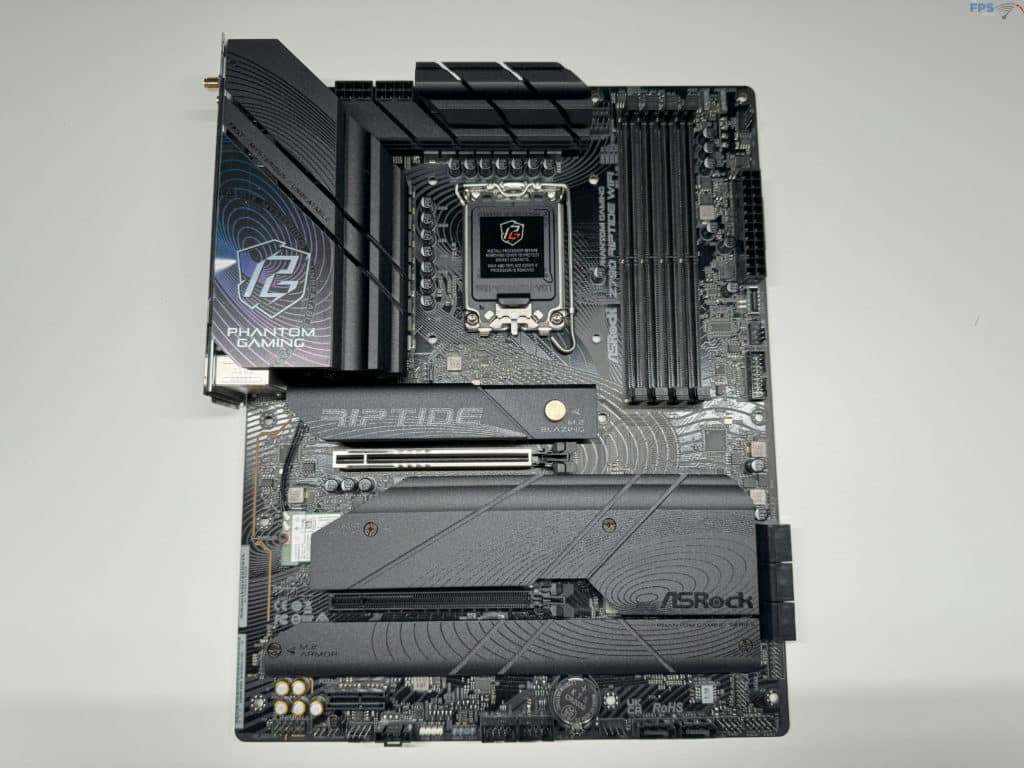

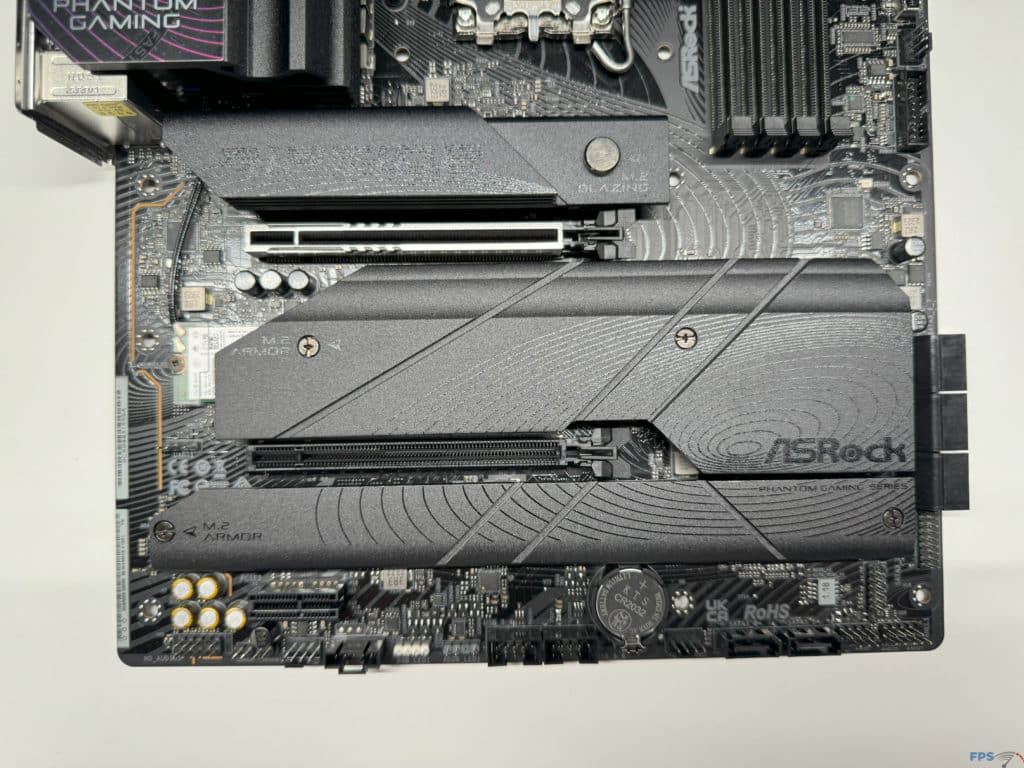





BIOS
The ASRock Phantom Gaming Z790 RIPTIDE WIFI features a single 128 Mb American Megatrends Inc. (AMI) UEFI Legal BIOS with GUI support, which is similar to what you will see on almost all motherboards on the market today. Before testing, we upgraded our BIOS to the latest stable version, 3.01 released on September 21st, 2023. All of our testing and images were completed after this BIOS update.

Those of you who are familiar with previous generation ASRock, or current generation ones, will have an instant familiarity with this UEFI BIOS interface. The BIOS itself was set up almost identically to all the other motherboards we have previously reviewed. When we started to look around the BIOS we had no trouble finding any features or options that we might want to modify.
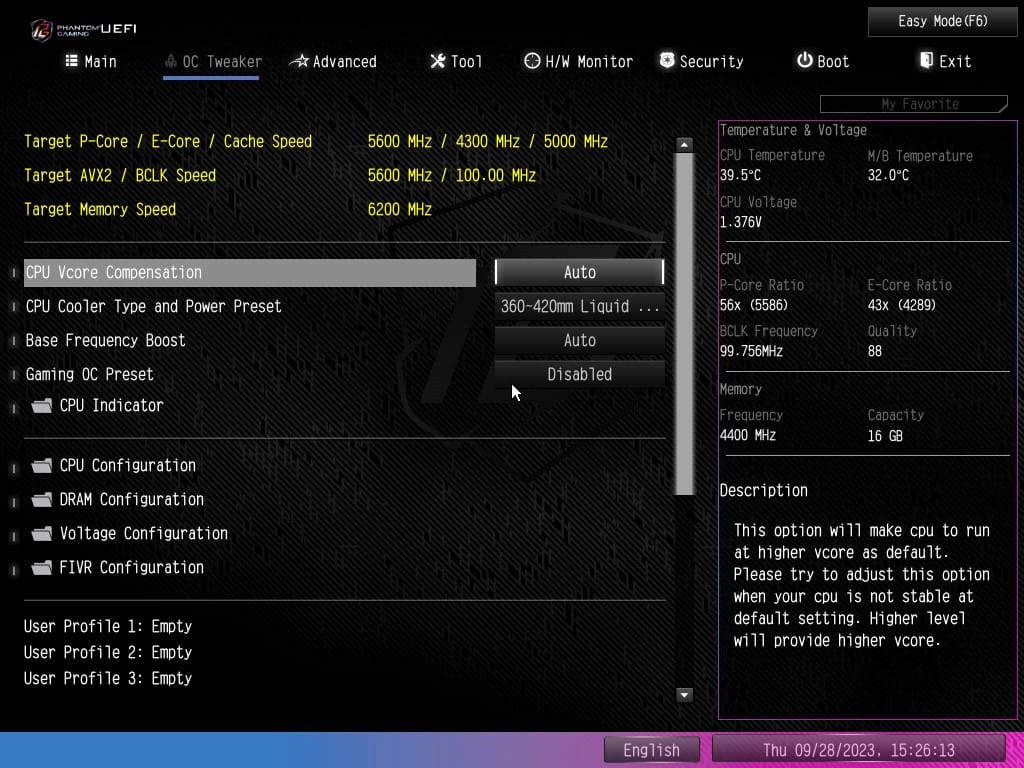
Like most motherboards, this one defaults to “EZ Mode” which can be swapped in and out of with “F6”. We will only be pointing out a few of the unique features that we found in this review, as the remainder of the BIOS is unchanged from the standard AMI BIOS you will find for any other motherboard. At the bottom of this section is a full gallery where we have attempted to show all of the major option pages available for adjustment in this BIOS, of which there were too many to list.
Many of the potential buyers of this motherboard will be looking to maximize their performance, and while overclocking is no longer as easy as it used to be ASRock provides a very easy method for overclocking out of the box by using the “Gaming OC Preset” that can be found on the “OC Tweaker” menu right near the top option. There are Stage 1 and Stage 2 options, both of which will increase your settings to pre-set overclocks, but be aware that not all CPUs will hit either stage, enabling this will unlock the TjMax limitation on the processor so be sure that your cooling is up to the task.
ASRock also includes on this motherboard a feature called the “CPU Indicator”, that attempts to rate your CPU cores and give you an idea of the quality of your processor, the higher the number the higher the quality, and the better the chance for overclocking. Outside of the above features, and the standard features, ASRock has included an RGB control built into the BIOS to allow for easy control, it is referred to as “POLYCHROME RGB”.


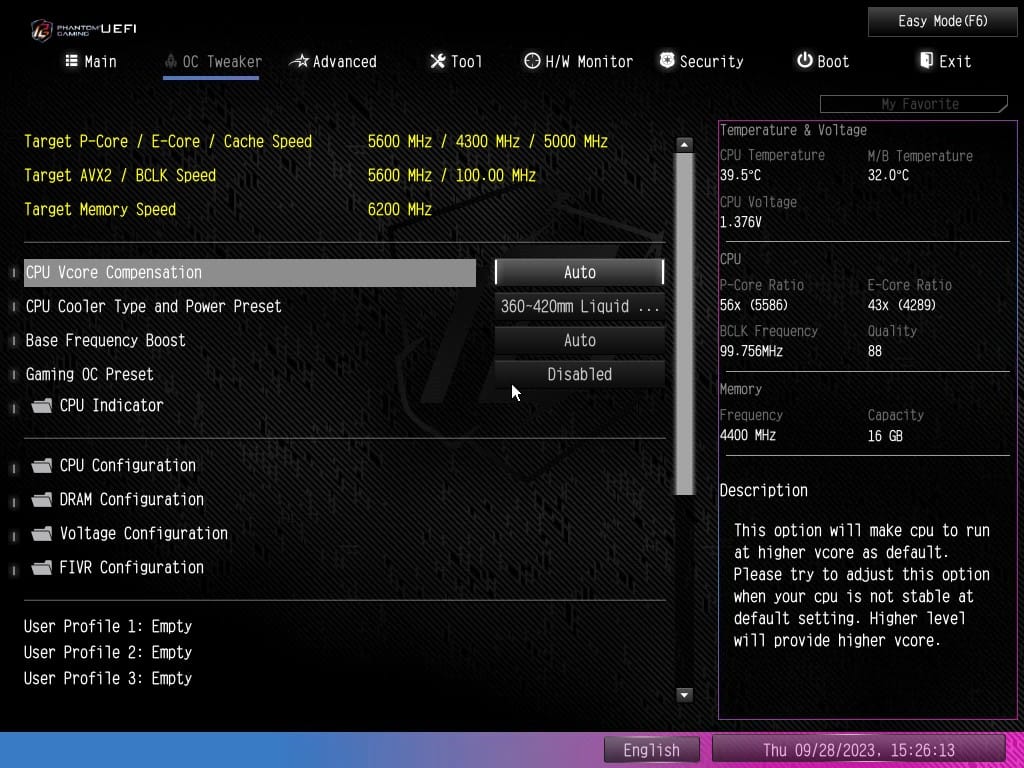
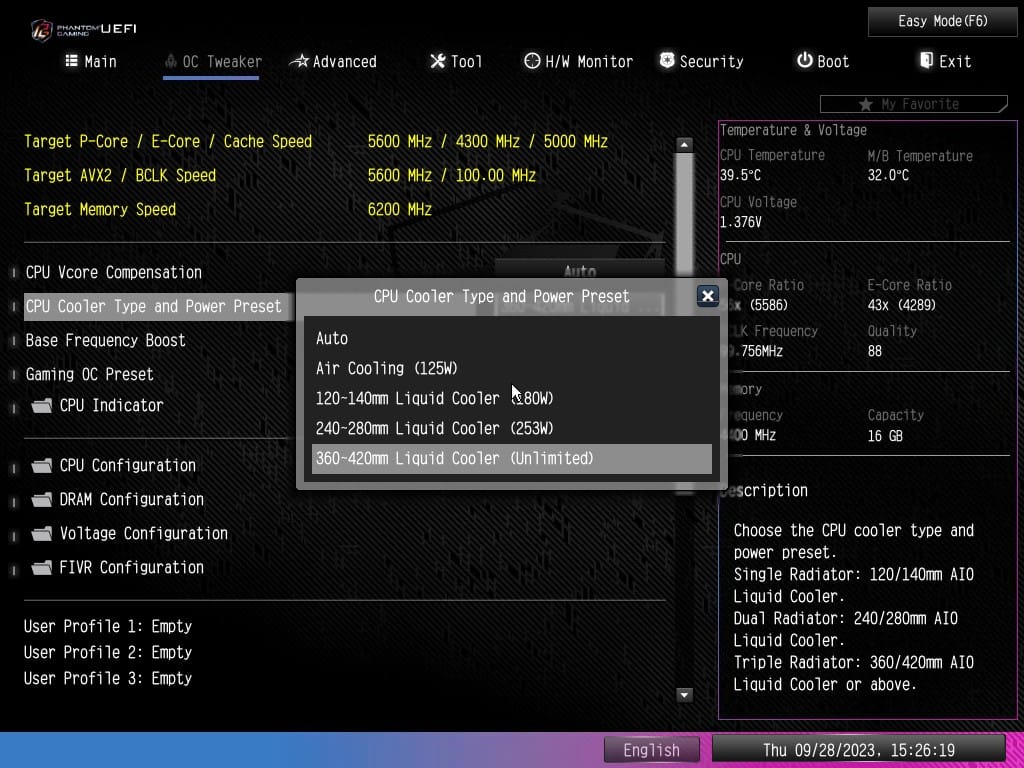
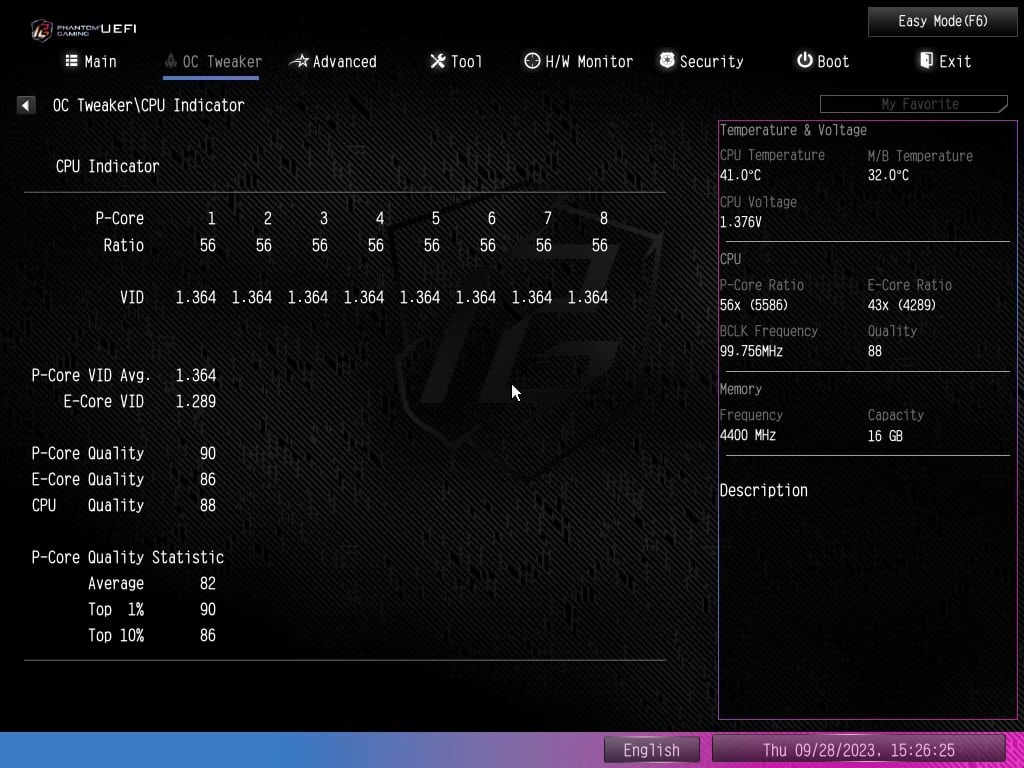

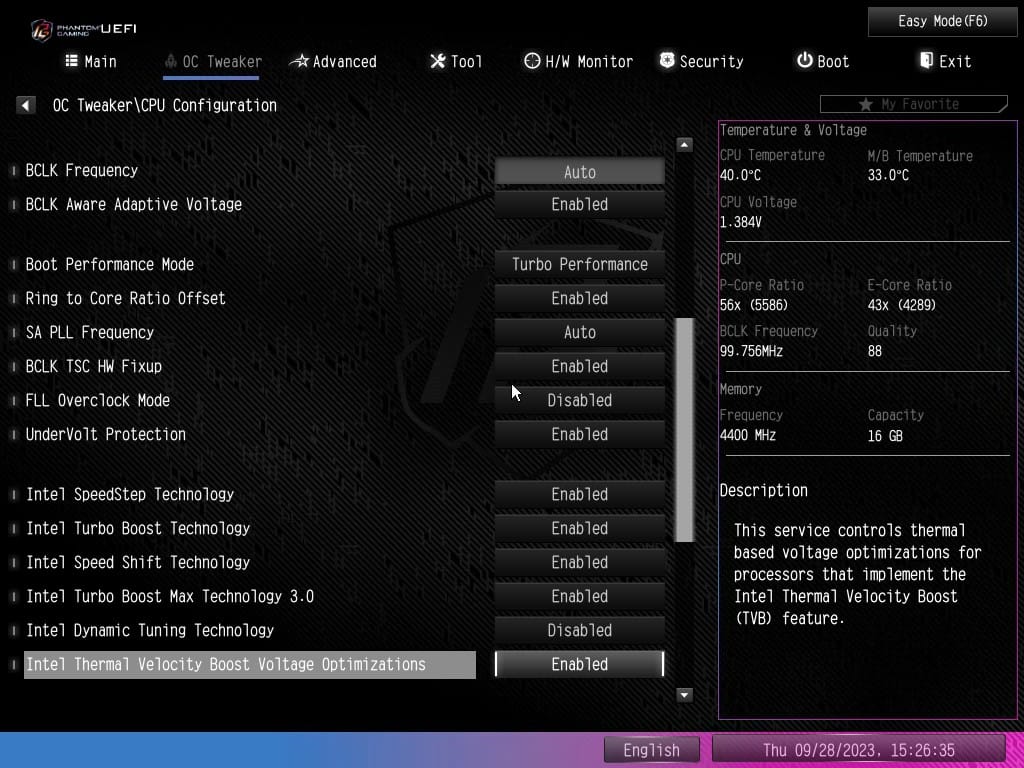

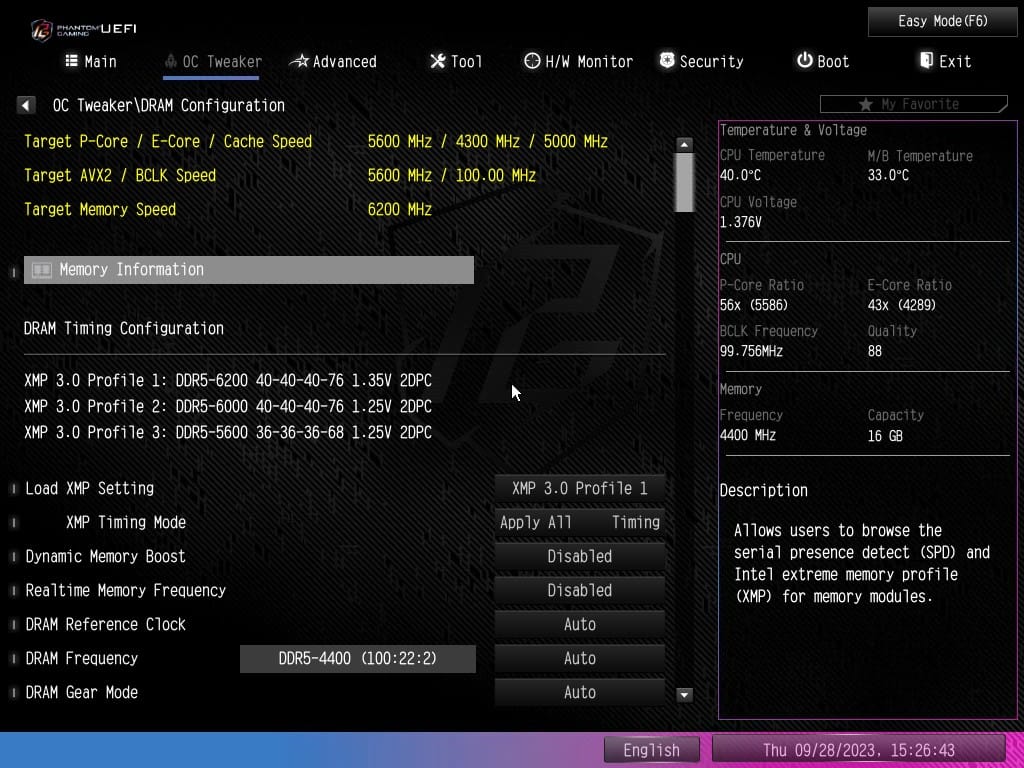
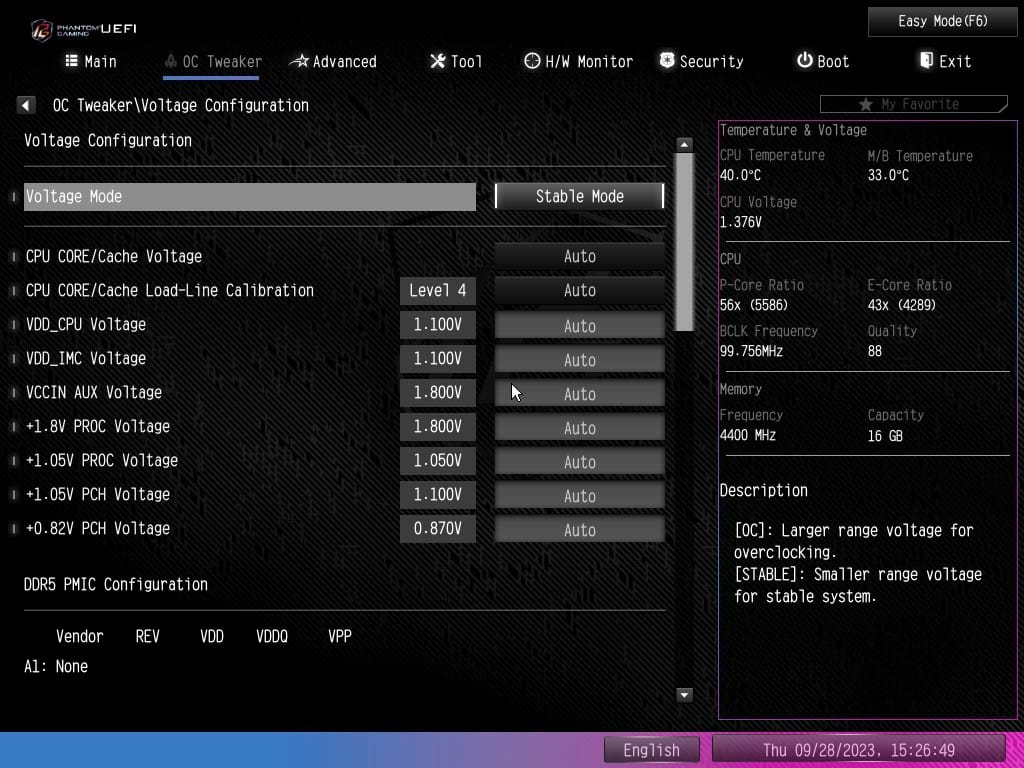
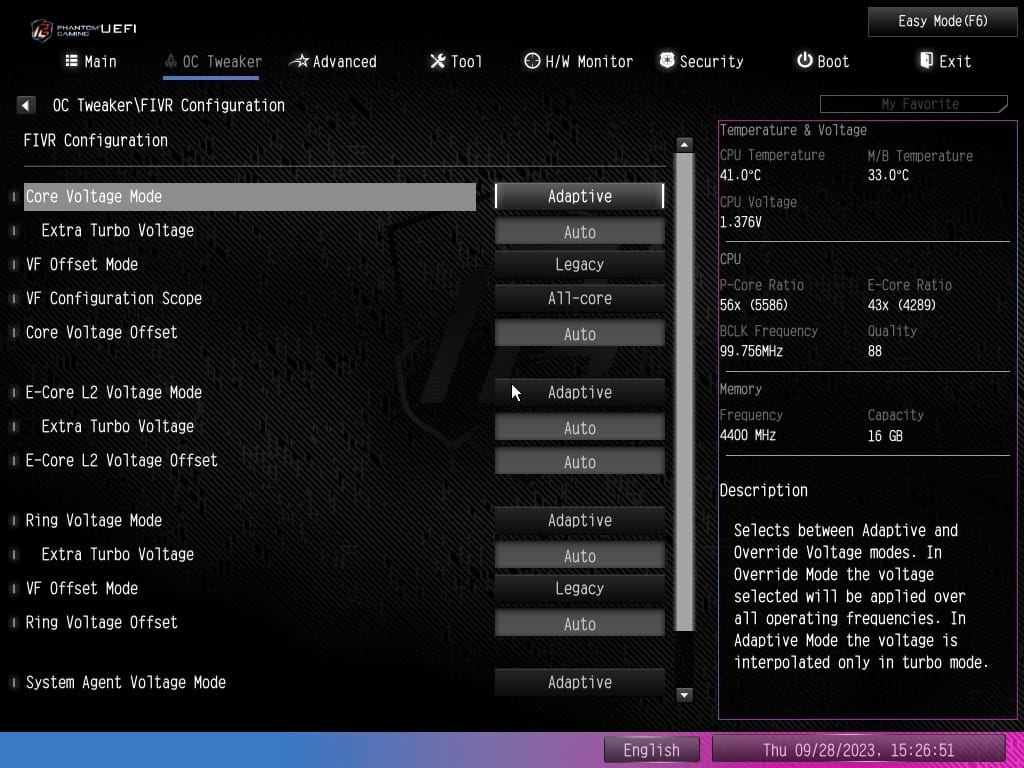
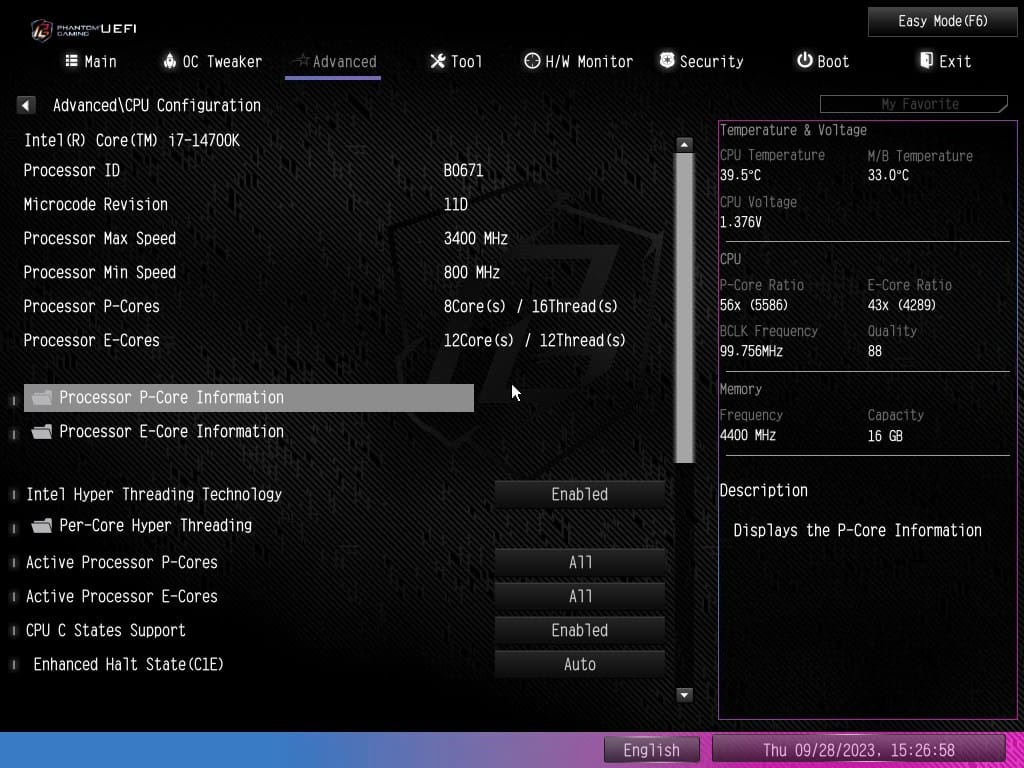



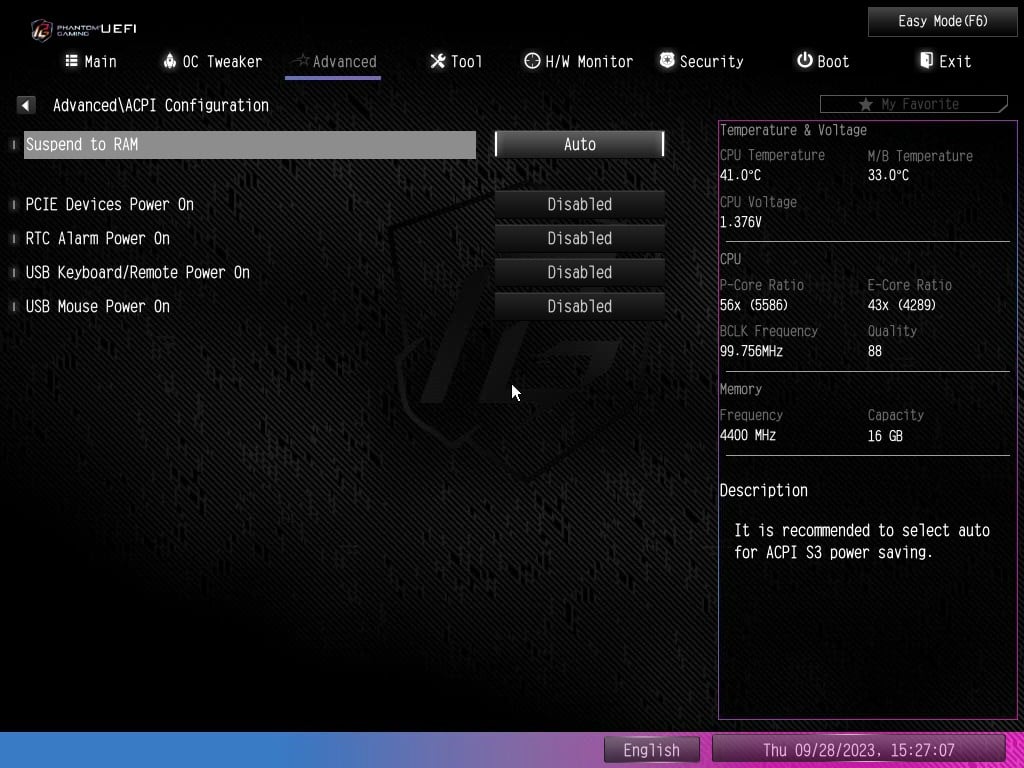

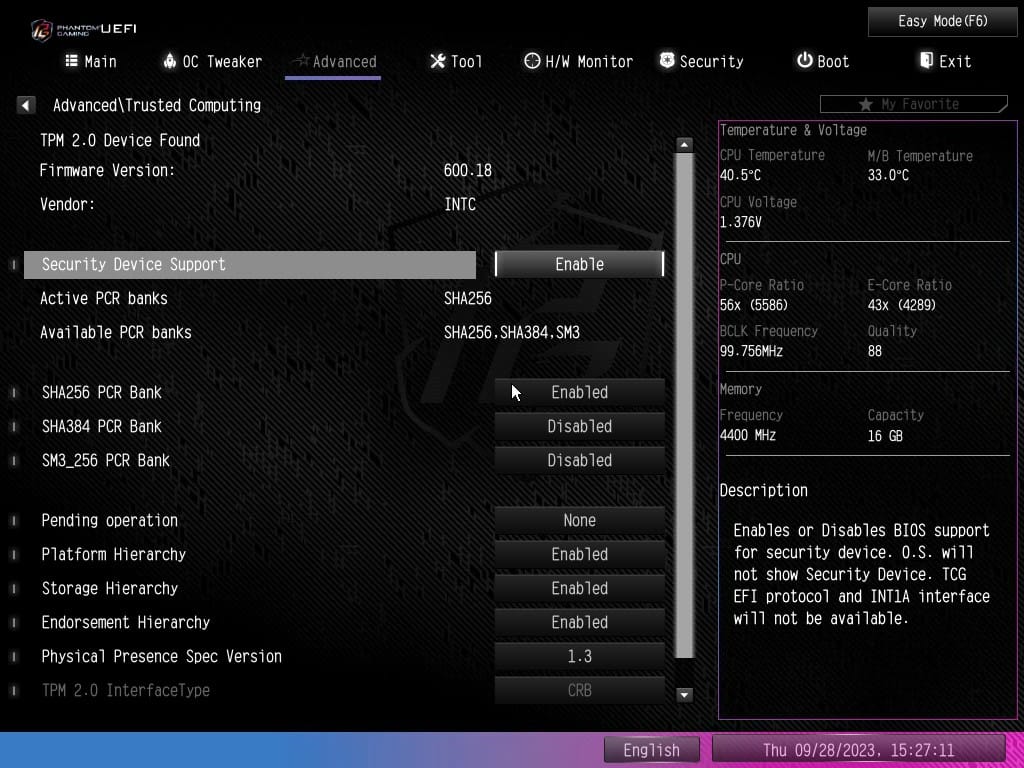

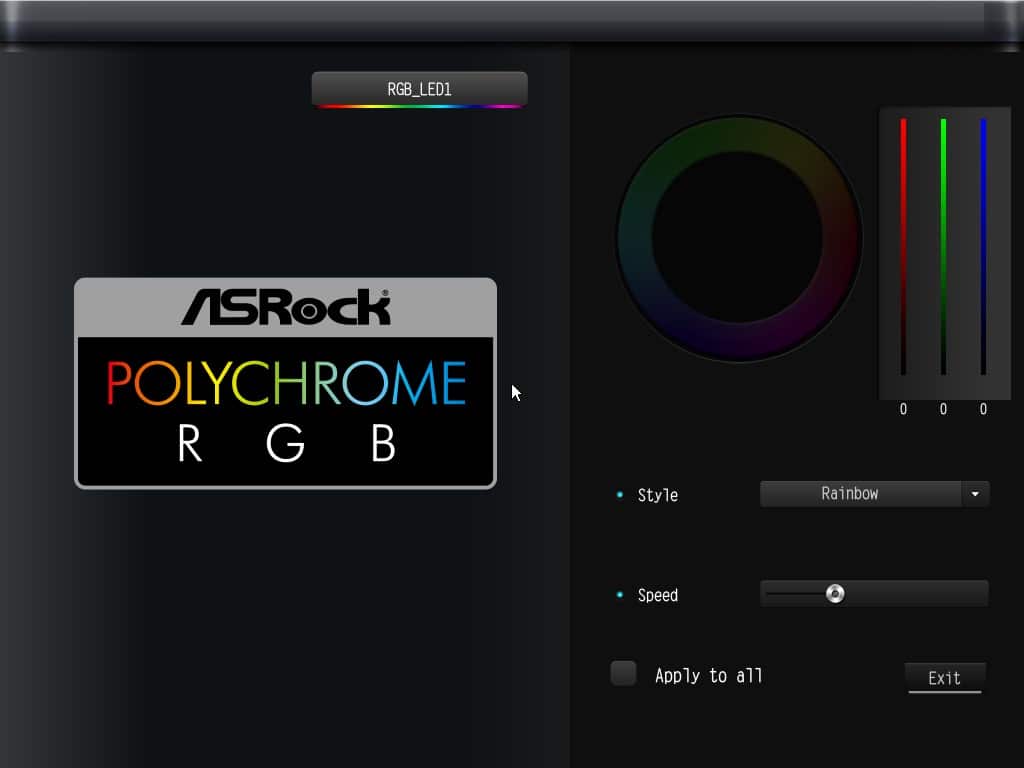



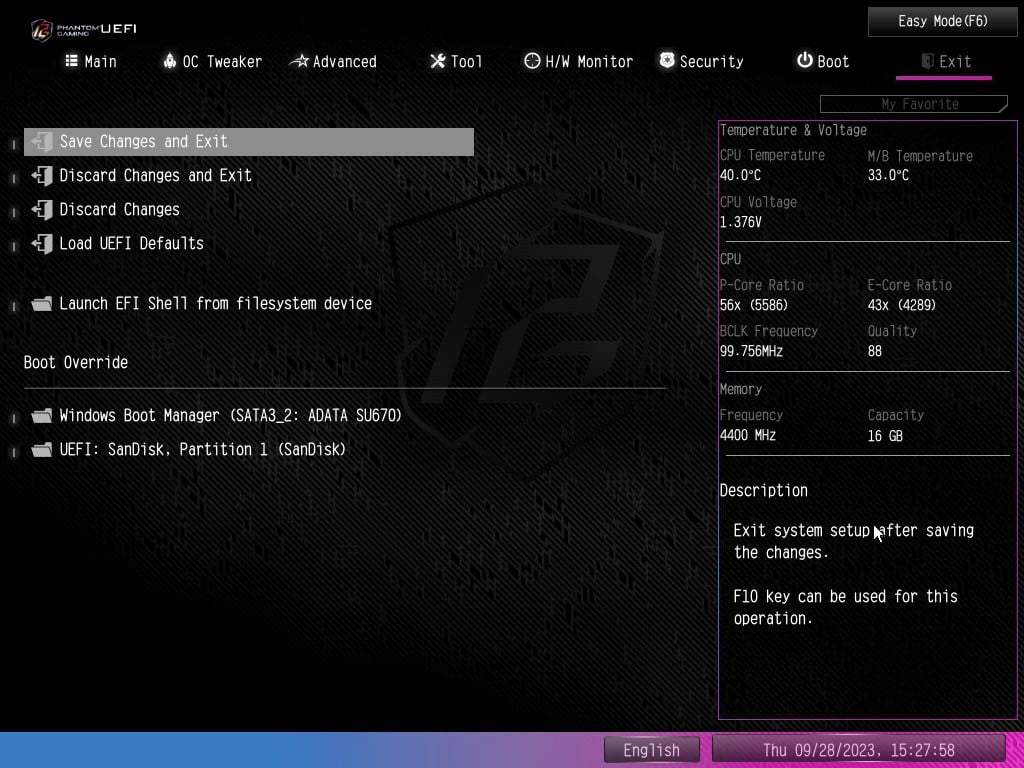
Test Setup
We have the latest BIOS installed, 3.01, released September 21st, 2023. All of our testing was performed at the default settings from the BIOS except the memory, here we set the DRAM to the XMP-1 profile for full speed on our memory.
For the OS setup note that we are on the latest 23H2 Windows 11 update with all incremental Windows updates applied at the time of writing.
As with other motherboards we have recently tested, we are providing the test results below to give an idea of what a user can expect in a pure stock installation. While the option for factory overclocking was available, we only tested the motherboard with a base configuration. With testing you will notice the lack of a Latency Mon test, a staple of our reviews, this is due to all attempts to test providing false high readings.
Subsystem Testing
SSD Performance
For this motherboard, we tested all five (5) slots, and performance is right in line with expected. All of our M.2 slot testing was performed with our PCIe 5.0 test device, the ADATA LEGEND 970 2TB NVME SSE. In our testing with this motherboard, we exceeded the speeds we saw in our initial testing. When testing the PCIe 5.0 speeds we were able to achieve 10,086.01 MB/s Read, and 10,196.33 MB/s write speeds were right below what we just tested from this motherboard’s big brother the ASRock Phantom Gaming Z790 NOVA WIFI. For all of the PCIe 4.0 slots we saw around 7,100 MB/s Read, and 7,000 MB/s Write speeds, which is essentially at the absolute maximum speeds of the slots. Take a look at our gallery for a full listing of speeds seen.

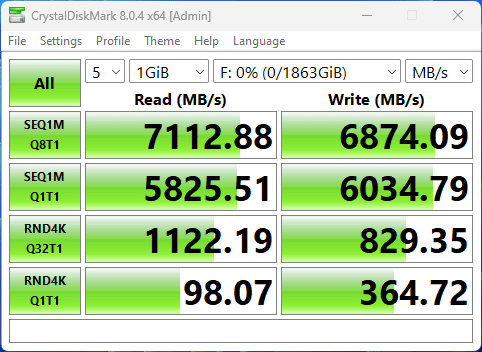
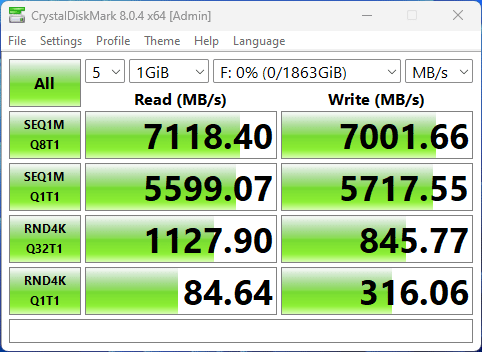
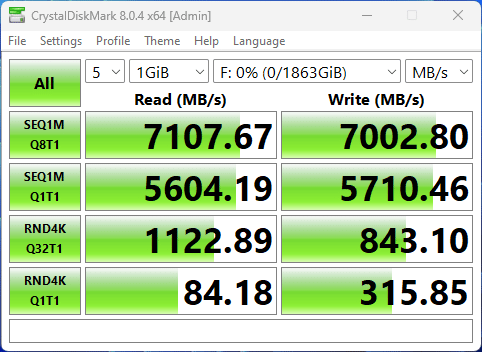
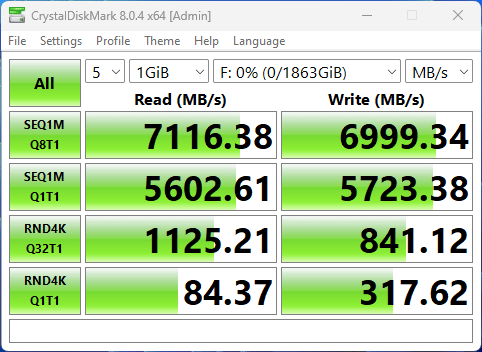
Application Benchmarks
Memory Bandwidth
For our application benchmarks, we are going to start with Aida64, and its memory read and write performance test. At the default settings, with the memory set to 6200MHz, the read performance on this motherboard is 96,629 MB/s of bandwidth, with the write performance coming in at 85,039 MB/s, both of which are some of the highest values we have seen with this memory kit.
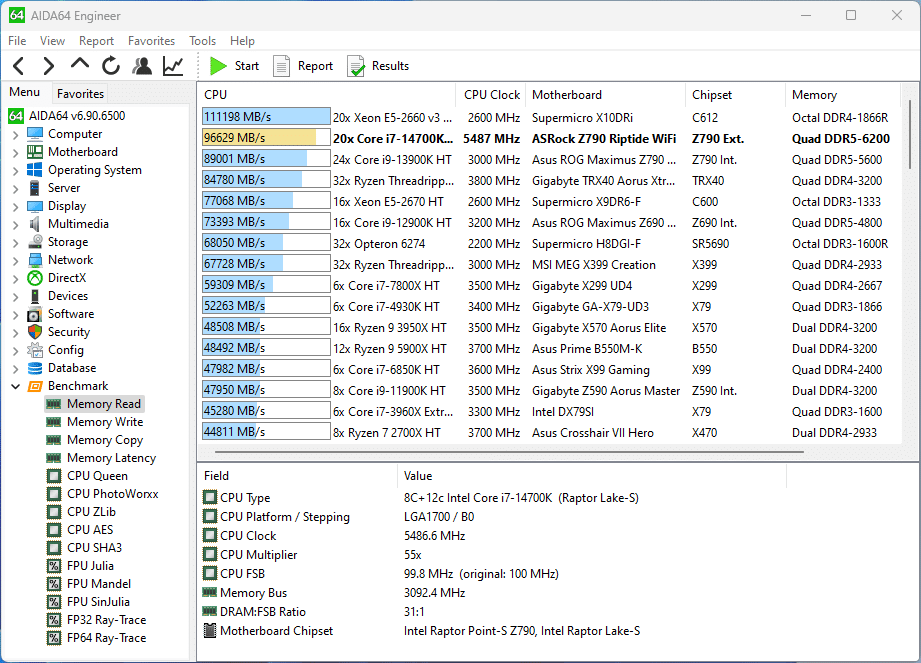
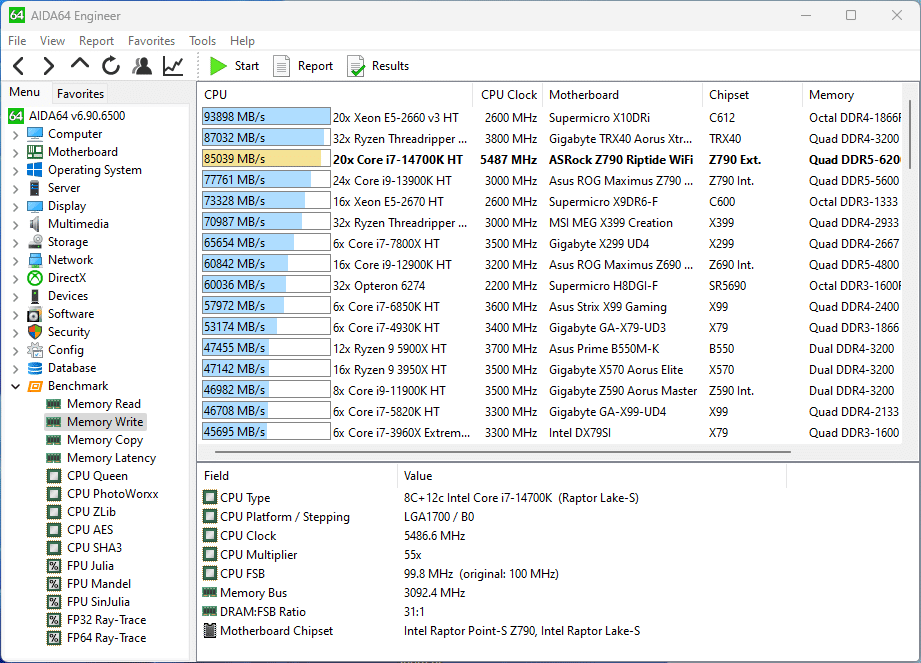
PCMark 10
The standard PCMark 10 test result that we were able to achieve is 9,521, which actually exceeds the score we saw with this processor in our initial test, Intel Core i7-14700K CPU Review – Page 3 of 8 (thefpsreview.com) as well as the ASRock Phantom Gaming Z790 NOVA WIFI.

Cinebench R23
With Cinebench we ran the multi-core test multiple times and consistently received a score of around 33,278.
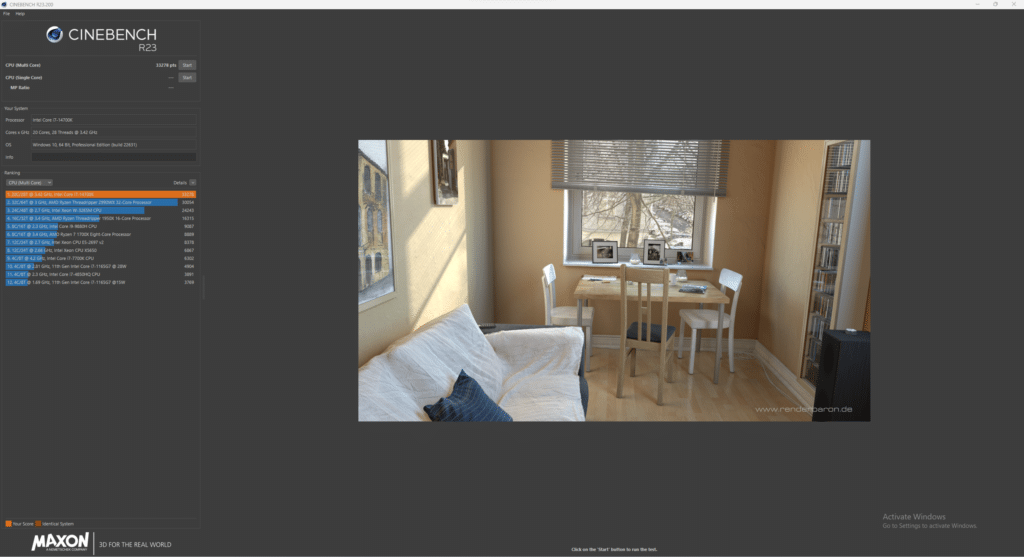
Blender Benchmark
With Blender, we were able to achieve 218.64 samples per minute for the monster test, 146.43 for junkshop, and 108.93 for the classroom tests.
3DMark
We ran both Time Spy and the CPU Profile tests with 3DMark. With the Time Spy test, we achieved a CPU score of 23,043, and for the CPU profile on max threads, we achieved 14,973.

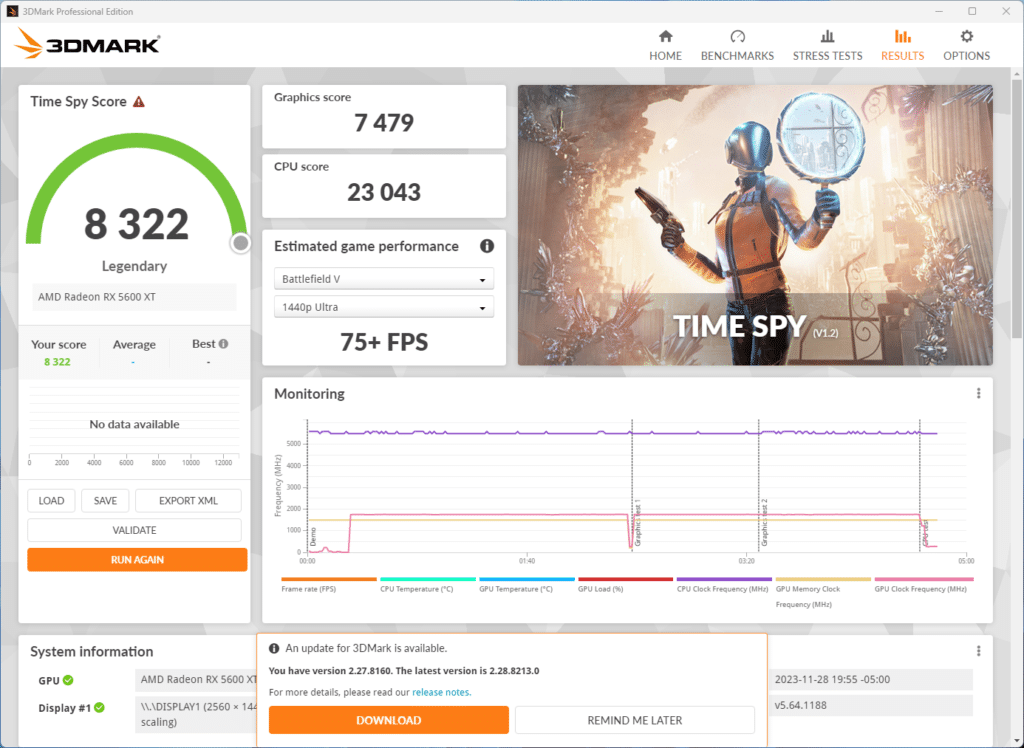
V-Ray Benchmark
Running V-Ray we achieved a score of 24,110, which is about what we would expect.

Conclusion
Today we are wrapping up our testing of the ASRock Phantom Gaming Z790 RIPTIDE WIFI, which is a mid-range Z790 offering from ASRock currently selling for $249 on NewEgg. Even though this is a mid-range motherboard, it has a lot of features that do compete with some higher-end options out there. All of the M.2 slots have motherboard-provided cooling if you desire to use it, support Gen4 drives or better, and tons of storage options with five (5) total M.2 slots and an additional eight (8) SATA ports, giving you even more storage options than this motherboard bigger brother the ASRock Phantom Gaming Z790 NOVA WIFI.
Installation and Use
This motherboard was as easy to install as any motherboard we have run across, the fan and power connectors are where you both need them and expect them, and all of the stock cooling for M.2 slots are easy to remove, with the “Blazing” one being fully tool-less. In addition to this, the BIOS is quite user-friendly and easy to navigate, and updating it was a breeze which is not always the case.
Final Points
Today the ASRock Phantom Gaming Z790 RIPTIDE WIFI was put through the paces of our testing cycle. It passed with flying colors, we had no stability or temperature issues, and the results were within the range we expected. All of the devices worked out of the box with a standard install, and beyond that, the motherboard integrates with Windows to prompt the user with helpful software to install all of the most up-to-date drivers.
Our RAM had no issues hitting its rated XMP speed of 6200 MHz, and we were able to max out the Gen5 M.2 drive we used in testing. This motherboard with all of its SATA storage options is well suited for a creative designer, while its price point will be very exciting for gamers out there.
The ASRock Phantom Gaming Z790 RIPTIDE WIFI has tons of features, from the 2.5 GbE LAN to the WiFi 7 compatibility out of the box, multiple Gen 3 USB Type-A and C connectors, and a total of five (5) M.2 slots, this motherboard at a very good value.


